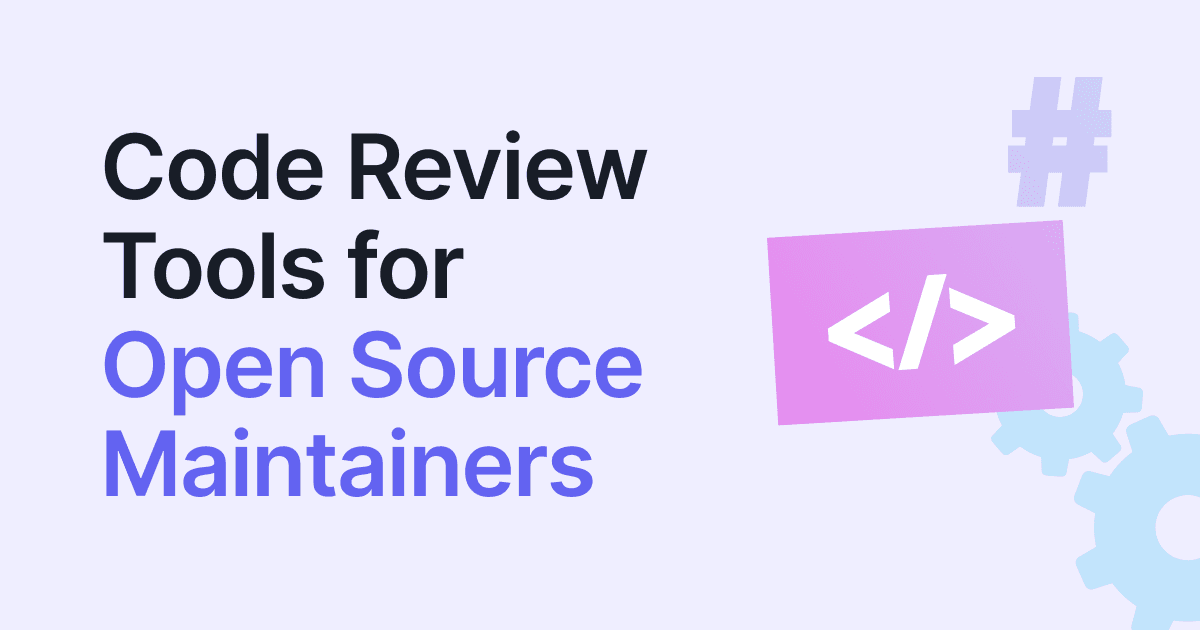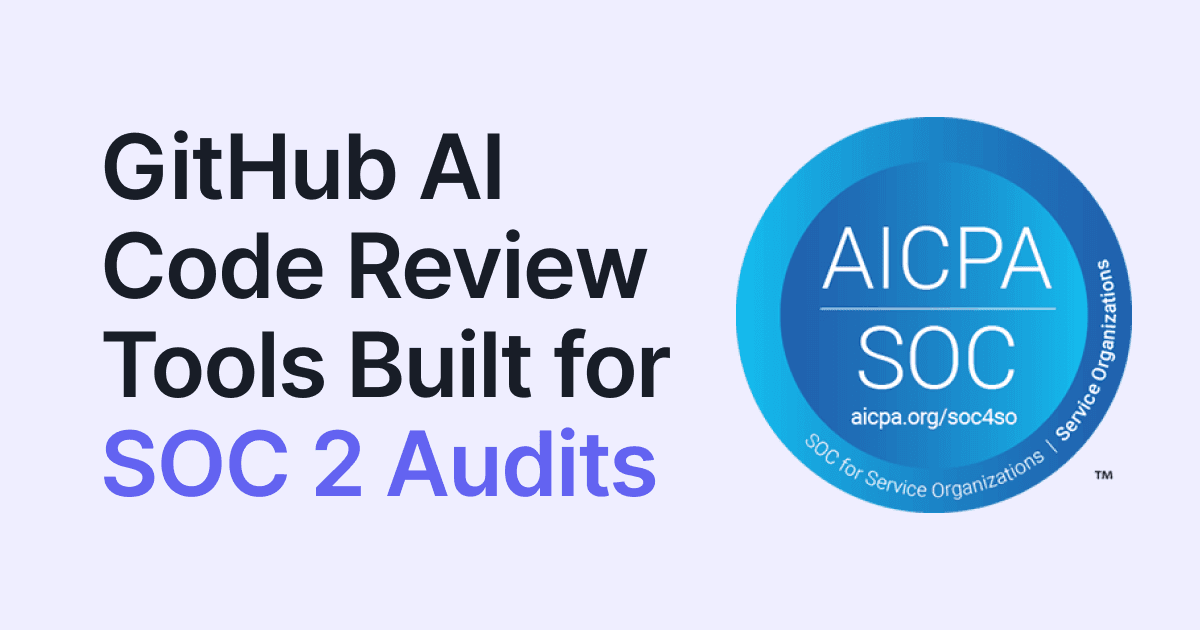AI Code Review
Jul 19, 2025
How OWASP Redefines Secure Code Review in 2026

Amartya Jha
Founder & CEO, CodeAnt AI
Most teams only find out they have a security bug after it has already cost them something, such as a customer, a weekend, or trust.
Not because they didn't run tests.
Not because they didn't do a code review.
But because nobody asked the uncomfortable question:
“What Could Go Wrong if Code Gets Abused?”
That's the gap OWASP's Code Review Guide is trying to close. It's not here to scare you with the OWASP Top 10. It's here to teach you how to see risk in code before it becomes a problem.
More than paranoia. It's about awareness.
Because when things go wrong in production, it's rarely a single bad line of code. It's the blind spots that build up, silently, across features, refactors, and reviews.
This guide helps you spot those blind spots.
And in this piece, we've rewritten it for the rest of us, the engineers, team leads, and reviewers who care about security, but don't have 10 hours to read a 200-page+ PDF.
If you're just here for the OWASP Code Review PDF, you can grab it here →
https://owasp.org/www-project-code-review-guide/assets/OWASP_Code_Review_Guide_v2.pdf
Code Review Is Broken, Here's What OWASP Wants You to Fix

Yup, code review is a ritual now. Every team does it. Every PR has a few comments.
But here's the kicker: most of it completely misses the point when it comes to security.
What OWASP is saying, and pretty loudly in its Code Review Guide PDF, is that you can't "hack yourself secure." Security doesn't magically show up at the end of the cycle.
And no, your pen test report isn't going to catch the messy assumptions quietly hiding in your business logic. If you wait till production to find out your session handling is broken or your access controls are too loose... it's already expensive, not just in dev time, but in credibility.
OWASP's message is blunt, but fair:
We're fighting an asymmetric battle. Attackers have infinite time. You don't.
So your only real advantage is to catch things early, during code review. And yeah, that means rethinking what you're actually looking for during a review.
It's not just "does the code work?"
It's "could this be abused?","
“Does this respect the context it's running in?","
And "are we exposing something we shouldn't?""
You might think you're being thorough, but if you're not reviewing through that lens, OWASP says you're probably missing the real threats. And they're not wrong.
Secure Code Review vs. Regular Code Review

If you've ever done a code review and thought "looks clean, good to go", yes, we are the same. But OWASP wants you to pause and ask: “Clean for whom?” Because code that's clean for functionality might still be a minefield for security.
And that's the key difference OWASP draws:
Regular code review is about how the code works.
Secure code review is about how the code could break, especially in the wrong hands.
Regular Code Review: The Baseline
OWASP explains this using the Capability Maturity Model (CMM). Most dev orgs hit Level 2 or 3 before they even start doing consistent reviews. At this stage, teams usually:
Catch logic bugs
Enforce style guides or best practices
Review for maintainability and functionality
And that's great. But what you're not doing (yet) is asking:
Does this create a new attack surface?
Is this logic safe under misuse?
Could a bad actor turn this into a breach?
That's where secure code review enters.
Secure Code Review: The Upgrade
Secure code review brings risk into the conversation. So instead of just checking the "what", you're reviewing for:
Risk levels tied to the module or feature
Are security controls present, consistent, and effective?
Contextual impact: What happens if this code fails under attack?
This means high-risk areas (auth, session mgmt, payments) get deeper scrutiny, and reviewers need domain understanding, not just syntax knowledge. And OWASP calls this out directly: “Secure code review is an enhancement to the standard practice, where security standards drive the decision-making.”
In simpler terms? You don't just ask: Does this work? You ask: Could this get us burned?
Why This Matters in Real Life
OWASP's not saying you need a military-grade review for every CSS tweak. What matters is that you're intentional about how deeply you go, based on the impact of what's being changed.
Secure review isn't about gatekeeping. It's about baking security into your existing dev process, so you don't have to patch it later. Secure code review isn't just a stricter version of regular review, it's a shift in how you look at code entirely. You're trying to understand risk in context.
And that brings us to something OWASP repeats again and again: Context is everything.
The Mindset Shift: Context Beats Checklists

OWASP doesn't say "don't use checklists," they suggest them as helpful tools. But what they really drive home is this: If you don't know what the code is meant to do, you have no way of knowing if it's secure. You can't just spot vulnerabilities in isolation.
You need to know:
What is this module for?
Who's using it?
What data flows through it?
What happens if it fails?
What does "secure" even mean in this business context?
OWASP gives a few good reasons why this matters:
1. Vulnerabilities aren't always obvious
You might look at a piece of code and think: "Looks clean, good logic, follows best practices." But that same code might:
Expose sensitive data if accessed by the wrong user
Bypass auth checks under certain edge conditions
Fail silently when a critical validation is skipped
2. Context drives priority
Not all code needs the same depth of review. If the change touches authentication, access control, session management, or personally identifiable information (PII), that's a high-context, high-risk area. You dig deeper.
The point OWASP makes is: your review depth should match the risk, and the only way to know the risk is to understand the context.
3. You're not reviewing code. You're reviewing decisions.
Secure code review is about more than just syntax or style. It's about the assumptions behind the code. OWASP wants you to ask:
"What did the dev assume about user behavior here?"
"Are we trusting something we shouldn't?"
"Is this control implemented consistently across the app?"
Because attackers don't care if your code is neat. They care if there's a hole, and if they can get through it. Start with the question: "What's this feature supposed to protect?"
Who Should Do the Review? How Teams Can Actually Pull This Off

Your lead engineer? Some magical security unicorn? OWASP's Code Review Guidelines don't push for a one-size-fits-all model. They do one thing clear: you need the right blend of context and experience in the room. You need risk awareness, context, and a reviewer who's thinking more than just "does it work?"
The SME model
For sensitive areas, like authentication, crypto, or anything that touches user trust, reviews are ideally done by someone with subject matter expertise. And yeah, that's sometimes not the developer who wrote the code. The key is: knowledge of the security domain being touched is non-negotiable.
Review scope matters
Reviewing individual code changes
Reviewing entire modules
Reviewing based on functionality or feature sets
Reviewing based on identified vulnerabilities or historical issues
Each level requires a slightly different lens, and possibly a different person doing the review.
Making it scalable
Teams can't stop shipping every time a secure review is needed. One thing that helps is dividing up responsibility based on areas of expertise, especially for large codebases. Some teams assign module owners. Others build small "security satellites" inside dev teams.
When and how to assign reviewers
This way, the person doing the secure review can get familiar with the feature's intent, not just the final diff. That part right, and the rest becomes a lot easier to trust.
The Types of Code Reviews, And What You're Actually Looking For

Now this is where it gets interesting. Secure code review isn't just about reading source files and hoping a vulnerability pops out. Let's walk through the ones that matter most.
1. Design / API Review
Purpose: Catch architectural flaws before they become implementation nightmares.
You look at: How data flows across modules, where trust boundaries are, how external services and APIs are integrated, and what authentication and authorization models are planned.
2. Code Review (Line-by-line)
Purpose: Find logic flaws, unsafe functions, and violations of security standards.
You're looking for: Input validation issues, missing error handling, bad cryptographic practices, business logic flaws, and inconsistent access control.
3. Integration Review
Purpose: Check how secure code interacts with the rest of the system.
You look at: How data is passed between services, whether controls are enforced consistently across boundaries, and if there's trust placed on assumptions that can fail.
4. Testing Review
Purpose: Make sure that what you've reviewed is also being validated by tests.
You also want to check: Are there test cases for security edge conditions? Do tests verify that access controls actually block unauthorized use? Are failures handled gracefully, or do they expose sensitive info?
When to Review Code, Pre-Commit, Post-Commit, or Audit Style?

So here’s the deal.
Secure code review isn’t tied to one fixed point in time.
Depending on your team’s structure, maturity, and speed, there are actually three main review timings.
And yup, each one has its pros, cons, and trade-offs.
1. Pre-Commit Review
This is the most proactive type and often the most lightweight. Usually, the developer who wrote the code walks another dev through the change, or the reviewer checks the patch before it's committed. This kind of early review helps catch architectural assumptions or unsafe patterns before they get baked in.
2. Post-Commit Review
Code gets merged, and review happens right after. This is probably the most common style in fast-moving teams. The review happens either on a separate branch, or after the change is live, but before too much builds on top of it. It's flexible, but also a bit reactive.
3. Audit Review
The deep dive, done after the code is deployed or released. Audit-style reviews are:
Structured
Systematic
Usually tied to compliance, risk assessment, or major incidents
They cover larger chunks of code, often across modules or services.
The guide makes it clear: secure code review should be baked into your process, not stapled on at the end.
Tools That Help, And Where They Usually Fall Short
1. Static Code Analyzers (SAST)
These are the go-to tools for most dev teams. They scan your codebase without executing it, looking for common patterns like SQL injection, XSS risks, and unsafe functions.
But here's the catch: They're only as smart as their rule set.
OWASP points out that SAST tools often: Generate false positives, miss context-specific logic issues, and struggle with custom frameworks or business logic flaws.
2. Dynamic Analysis Tools (DAST)
These are the "let's run it and see what breaks" kind. DAST tools test your running app by simulating external attacks.
But they're reactive: they can only find what's already deployed.
3. Code Coverage & Diff Tools
These help you measure which parts of the code have changed, which parts are being tested, and what needs fresh review.
4. Threat Modeling Tools
This one's more for design and early planning phases.
Some tools help you:
Map out components and data flows
Identify trust boundaries
And predict potential abuse paths
Used right, these tools help shape where your secure code reviews need to go deep, especially in high-risk modules.
But again, they guide the humans. They don’t do the review for you.
So... should you use tools?
Absolutely. OWASP’s view is pretty balanced here:
Tools can scale your review process.
But tools that just spit out alerts without context can easily be ignored or misused.
So, the smart move?
Use SAST/DAST to flag the obvious stuff
Use coverage tools to focus your review effort
Use threat models to prioritize what really matters
Then… bring in humans to do the thinking
Because no tool knows your app, your business logic, or your edge cases better than your team does.
(Yes, we’re working on helping CodeAnt.ai get really close.)
Wait, what’s CodeAnt.ai?
It’s your AI-powered reviewer that actually understands the context behind your code changes.
We built it for teams who were tired of sifting through noisy scans and vague alerts.
With CodeAnt.ai, you get:
A clean, reviewer-style dashboard
OWASP issues flagged and grouped by severity, risk, and code context
Feedback on every pull request, from security to secret detection
And real summaries, not just diffs
Here’s the fun part:
We just raised $2 million to help dev teams cut code review time and bugs by over 50%, and we’re just getting started.
Here is a normal repository dashboard as it looks. And you will see below how OWASP issues are captured inside CodeAnt.

👇 Here’s how CodeAnt works, showing you exactly how we surface OWASP-mapped issues and help you act on them.

No clutter. No false positives.
Just what you need to fix, and why.
Making It Stick: Building a Real Secure Code Review Culture
At the end of the day, tools are nice. Processes help. But if secure code review always feels like "extra work," no one will do it well, or at all. Let's break down what that really means.
1. Make security a shared responsibility
If secure review is "the security team's job," you've already lost. The guide stresses that all developers, not just AppSec, should be involved in the review process.
2. Integrate review into the SDLC
Secure review should happen at multiple stages, from design to deployment. Use code ownership to assign review responsibility where it makes sense. The trick is: add security without adding friction.
3. Prioritize based on risk
Not all code needs the same level of scrutiny. The guide encourages teams to:
Focus deep reviews on high-risk areas (auth, payments, data handling)
Use lighter checks for low-risk, low-impact modules
Create a rough risk profile so devs know when to slow down and zoom in
4. Support the reviewers
The guide points out that reviewers should be trained on both the app and secure coding practices, and they should feel safe calling out concerns, even if it slows a release.
5. Build feedback loops
The most resilient teams treat reviews as a learning tool, not just a filter. The OWASP PDF recommends:
Using review findings to improve coding guidelines
Tracking recurring issues to update checklists and patterns
Sharing lessons across teams, not just fixing and forgetting
That way, each review doesn’t just fix code.
It levels up everyone involved.













